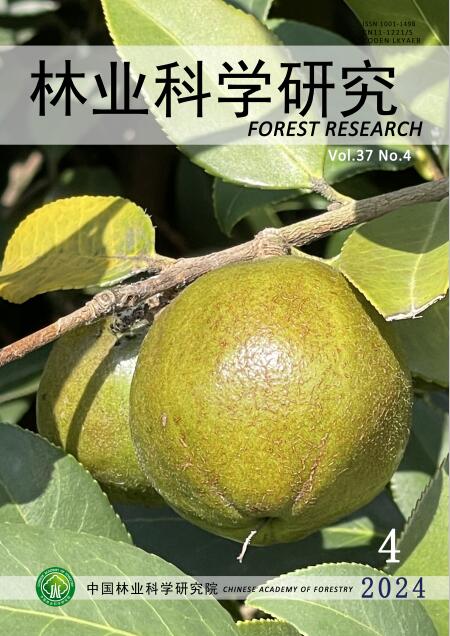印度旁遮普邦西北部不同土地利用制度的经济评价
Q4 Agricultural and Biological Sciences
引用次数: 4
摘要
本研究是对印度旁遮普邦西北地区农民采用的传统和商业农林业做法进行社会经济诊断的结果。商业农林复合系统的主要树种是三角木(P. deltoides)、三角角木(E. tereticornis)和大角木(T. grandis)等树种,而传统上种植的则是农作物。同时,还对梨叶兰花的经济效益进行了评价。结果表明,以树木为基础的土地利用系统在经济上是可行的,比纯农业作物更有利可图。B:C比值在5年后最高,为3.30。同时,P. deltoides+T的B:C比值较高,为2.02。以柽柳作物为基础的土地利用系统,其次是大柽柳人工林(2.06)、柽柳+ 0。sativa (1.89), T. aestivum+P。甘蓝菌+水果作物(1.72)、甘蓝菌+水果作物(1.56)和甘蓝菌+O。研究期间Sativa(1.27)。在旁遮普的研究区域,以三角角蕨和三角角蕨为基础的土地利用系统在经济上是可行的,比其他土地利用系统更有利可图。这些土地使用制度也提供了额外的收入,并创造了农业就业机会。本文章由计算机程序翻译,如有差异,请以英文原文为准。
Economic Evaluation of Different Land Use Systems in North Western Region of Punjab, India
The present study is the outcome of socio-economic diagnosis of traditional as well as commercial agroforestry practices followed by farmers in north western region of Punjab state, India. Tree species like P. deltoides, E. tereticornis and T. grandis are the main species of commercial agroforestry system, whereas, agricultural crops are grown traditionally. Simultaneously economics of P. pyrifolia based orchid was also included for evaluation. Results showed that tree based land use systems are economically viable and more profitable than pure agricultural crops. Highest B:C ratio was recorded in pure E. tereticornis plantations (3.30) after 5 years. Simultaneously higher B:C ratio (2.02) was recorded in P. deltoides+T. aestivum crop based land use system followed by T. grandis plantations (2.06), T. aestivum+O. sativa (1.89), T. aestivum+P. glaucum+fruit crop (1.72), B. napus+fruit crop (1.56) and B. napus+O. sativa (1.27) during period of study. E. tereticornis and P. deltoids based land use systems are economically viable and more profitable than other land use systems in this study area of Punjab. These land-use systems have also provided additional revenue and generated on farm employment opportunities.
求助全文
通过发布文献求助,成功后即可免费获取论文全文。
去求助
来源期刊

林业科学研究
Environmental Science-Ecology
CiteScore
0.90
自引率
0.00%
发文量
4834
期刊介绍:
Forestry Research is a comprehensive academic journal of forestry science organized by the Chinese Academy of Forestry. The main task is to reflect the latest research results, academic papers and research reports, scientific and technological developments and information on forestry science mainly organized by the Chinese Academy of Forestry, to promote academic exchanges at home and abroad, to carry out academic discussions, to flourish forestry science, and to better serve China's forestry construction.
The main contents are: forest seeds, seedling afforestation, forest plants, forest genetic breeding, tree physiology and biochemistry, forest insects, resource insects, forest pathology, forest microorganisms, forest birds and animals, forest soil, forest ecology, forest management, forest manager, forestry remote sensing, forestry biotechnology and other new technologies, new methods, and to increase the development strategy of forestry, the trend of development of disciplines, technology policies and strategies, etc., and to increase the forestry development strategy, the trend of development of disciplines, technology policies and strategies. It is suitable for scientists and technicians of forestry and related disciplines, teachers and students of colleges and universities, leaders and managers, and grassroots forestry workers.
 求助内容:
求助内容: 应助结果提醒方式:
应助结果提醒方式:


